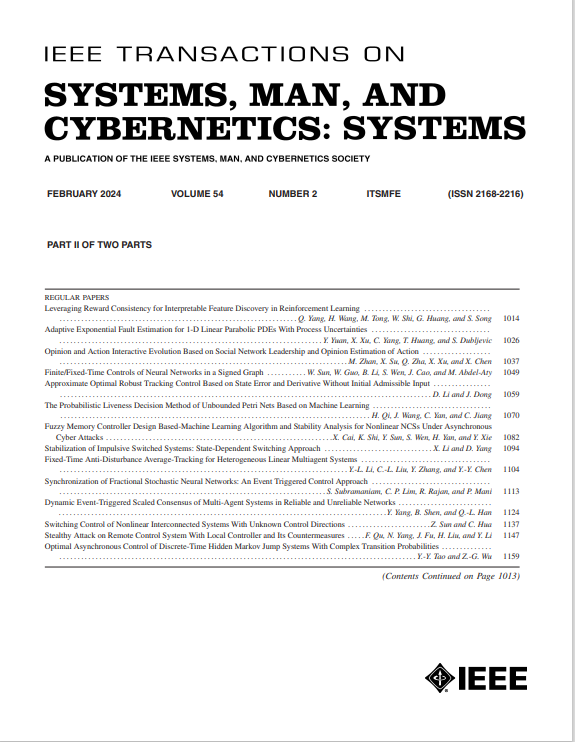An Adaptive Fuzzy Rough Neural Network and Its Application in Classification
IF 8.7
1区 计算机科学
Q1 AUTOMATION & CONTROL SYSTEMS
IEEE Transactions on Systems Man Cybernetics-Systems
Pub Date : 2025-08-26
DOI:10.1109/TSMC.2025.3599882
引用次数: 0
Abstract
Fuzzy rough set theory is an important approach for analyzing data uncertainty. However, the model lacks adaptive learning capabilities and cannot fit labeled data effectively in classification tasks. This study aims to introduce an adaptive learning mechanism into fuzzy rough set theory to enhance its data-fitting capability. To this end, this study seamlessly integrates fuzzy rough set theory with neural networks and proposes a novel fuzzy rough neural network model. This model adaptively learns fuzzy similarity relations in rough set models using the backpropagation algorithm. The proposed network model comprises five layers: the input, membership, fuzzy lower approximation, fully connected, and output layers. The fuzzy similarity relations between the input samples and training samples are computed in the membership layer. These relations are utilized in the fuzzy lower approximation layer to describe the degree to which the samples belong to different classes. The fuzzy rough lower approximations of the input samples are finally fused in the fully connected layer using feature weight coefficients. In the backpropagation stage, the gradient of the objective function is used to correct the fuzzy similarity relations and feature weight coefficients. This study theoretically proved that the proposed fuzzy rough network has a generalized function approximation property and can approximate any decision function. Experimental analysis showed that the proposed method is effective and performs better than most of the existing state-of-the-art algorithms.自适应模糊粗糙神经网络及其在分类中的应用
模糊粗糙集理论是分析数据不确定性的重要方法。然而,该模型缺乏自适应学习能力,在分类任务中不能有效拟合标记数据。本研究旨在将自适应学习机制引入模糊粗糙集理论,以提高其数据拟合能力。为此,本研究将模糊粗糙集理论与神经网络无缝结合,提出了一种新的模糊粗糙神经网络模型。该模型采用反向传播算法自适应学习粗糙集模型中的模糊相似关系。所提出的网络模型包括五层:输入层、隶属层、模糊下近似层、完全连通层和输出层。在隶属度层计算输入样本和训练样本之间的模糊相似关系。在模糊下近似层中利用这些关系来描述样本属于不同类别的程度。最后利用特征权系数将输入样本的模糊粗糙下近似融合到全连通层中。在反向传播阶段,利用目标函数的梯度对模糊相似关系和特征权重系数进行校正。从理论上证明了所提出的模糊粗糙网络具有广义函数逼近性质,可以逼近任意决策函数。实验分析表明,该方法是有效的,性能优于大多数现有的先进算法。
本文章由计算机程序翻译,如有差异,请以英文原文为准。
求助全文
约1分钟内获得全文
求助全文
来源期刊

IEEE Transactions on Systems Man Cybernetics-Systems
AUTOMATION & CONTROL SYSTEMS-COMPUTER SCIENCE, CYBERNETICS
CiteScore
18.50
自引率
11.50%
发文量
812
审稿时长
6 months
期刊介绍:
The IEEE Transactions on Systems, Man, and Cybernetics: Systems encompasses the fields of systems engineering, covering issue formulation, analysis, and modeling throughout the systems engineering lifecycle phases. It addresses decision-making, issue interpretation, systems management, processes, and various methods such as optimization, modeling, and simulation in the development and deployment of large systems.
 求助内容:
求助内容: 应助结果提醒方式:
应助结果提醒方式:


